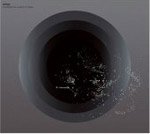Out of Norway’s N-Collective comes a smattering of groups dedicated to a new style of musical fusion. In a land usually noted for the notorious black-metal theatrics of bands like Darkthrone, Burzum, and Mayhem, this segment of Norway’s scene strives for something different: an amalgamation of metal stylings, free jazz and electro-acoustic improvisation. At the forefront of this group stand Ultralyd.
On Compositions for a Piece of Music, the ‘Lyd’s third album, their first on Rune Grammofon, the progression from previous releases is immediately apparent. On opener "Saprochord," drummer and vibraphone player Morten J. Olsen lay down a metronomic 4/4 break-beat, a far cry from the Brian Chippendale-meets-Rashied Ali stylings of 2005’s Chromosome Gun. Olsen doubles in the group MoHa! with guitarist Anders Hana, and while that band continues to operate in thrash-and-burn, free-splatter mode, Ultralyd opt for a more controlled chaos. This could also be attributed to a changing of the sax guards, as wunderkind Kjetil Moster has replaced seasoned veteran Frode Gjerstad on sax. Gjerstad, a jazz stalwart who can blow as hard (and has collaborated with) as Peter Brötzmann and Evan Parker, righteously honked away on the aforementioned Chromosome Gun.
Moster utilizes a different approach on Conditions for a Piece of Music, compressing the frenetic energy of Albert Ayler into barely audible expressions of emotion, creating the tension of a quiet moment right before the big bang, hovering on the brink of an eruption that never occurs. As Moster squeezes the first few bits of steam out of his alto, an ominous wisp of gaseous guitar skronk wafts into the mix and a tinkle of vibes ring out (Think This Heat’s "24 Track Loop" reflected back through the black-frosted lens of Sunn O)))’s glacial doom).
"Pentassonance" is a three-part suite, broken up and scattered throughout the album. Part II of said suite is an extremely sparse piece, an electro-acoustic improvisation similar in sonority to Death Ambient and the compositions of Greek composer Iannis Xenakis. Ultralyd have listed Xenakis and Dylan Carlson’s Earth as equally important influences. Bassist Kjetil Brandsal (also of aggro-experimenters Noxagt) doesn’t play extenuated drones like Carlson, instead cutting the drones into varying lengths and timbres and dispersing them strategically throughout the pieces.
Xenakis composed according to mathematical formulaes and theorems for his music, but was conflicted about whether or not to let his compositional methods be known to the public. A cursory search for Ultralyd’s compositional methods leaves a similar vacuum. Is it improvisation? Or, like Xenakis’s work, is it meticulously thought-out and ordered? Either way, it’s damn impressive.
